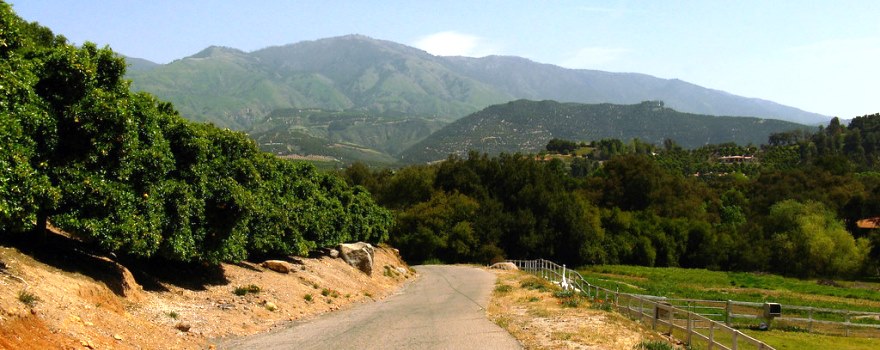DWR Announces Draft Basin Prioritization for Modified Basins
The Department of Water Resources (DWR) today announced the draft results of Sustainable Groundwater Management Act (SGMA) 2019 Basin Prioritization Phase 2 for the 57 modified basins affected by the 2018 Basin Boundary Modifications. Today’s announcement begins a 30-day public comment period to allow input from the public and local agencies. DWR will also hold a public meeting to explain the results and accept public comment.
Updated Frequently Asked Questions on Basin Prioritization
Answers to frequently asked questions are provided in the Frequently Asked Questions on Basin Prioritization document.
Public Comment
A public comment period on SGMA 2019 Basin Prioritization Phase 2 Draft results for modified basins is open now through May 30, 2019. All public comments received through the process will be reviewed and evaluated.
Submit public comments.
Public Meeting
Public comments can also be provided at the following public meeting: Draft SGMA Basin Prioritization for Modified Basins Public Meeting
Monday, May 13, 2019, at 1 p.m.
Central Valley Regional Water Quality Control Board
11020 Sun Center Drive, Suite 200
Rancho Cordova, CA
Agenda
Live webcast: On meeting day, click the link and scroll to “DWR Draft Basin Prioritization for Modified Basins Meeting.” You can view live video or listen to live audio.
RSVP: The meeting is free, but please let us know if you will be attending in person so we can have enough materials.
For questions, email sgmps@water.ca.gov.
NEW Take a Survey to Help Plan the Next GSA Forum
DWR hosted a Groundwater Sustainability Agency (GSA) Forum on March 21, 2019, which brought together water planners and stakeholders from across the state to share experiences and strategies as they implement the SGMA. Based on the level of interest and comments received from attendees, the forum was a beneficial venue for building networks and sharing strategies associated with SGMA implementation. DWR plans to host additional GSA Forums to further communication among SGMA water managers and stakeholders. Please complete the survey so we can use your input to help plan and improve the next GSA Forum:
Take the GSA Forum Survey.
NEW DWR Releases IRWM Implementation Grants Proposal Solicitation Package
DWR released the final Guidelines and Proposal Solicitation Package (PSP) for the Integrated Regional Water Management (IRWM) Implementation Grant Program, which provides funding for projects that help meet the long-term water needs of the state and incorporate integrated regional strategies. Approximately $222.3 million in Proposition 1 grant funding is available for IRWM implementation projects, with $23.6 million designated for projects that provide support to Disadvantaged Communities. GSAs and SGMA stakeholders interested in IRWM Implementation funding should coordinate with their respective IRWM Region. For more information, visit the IRWM Implementation Grant Program page.
NEW State Water Resources Control Board Fact Sheets Available
The State Water Resources Control Board (SWRCB) announced the release of new and updated fact sheets on SGMA which include Probationary Designation and Groundwater Regulation by the State Water Board, Stakeholder Inclusion, State and Regional Water Boards basics, Funding Opportunities for Groundwater Sustainability Agencies, and Beneficial Use and Underground Water Storage Projects. These fact sheets can be found on the SWRCB’s SGMA webpage.
REMINDER DWR’s Guidance Documents Can Help with SGMA Communication and Engagement
SGMA requires GSAs to consider all beneficial uses and users when preparing groundwater sustainability plans (GSPs). DWR has documents that provide clarification, guidance, and examples to help GSAs develop the essential communication and engagement elements of a GSP. These useful publications can be found on the Assistance and Engagement Webpage.
Guidance documents include: Stakeholder Communication and Engagement, Engagement with Tribal Governments, Stakeholder Engagement Requirements by Phase, and Communication and Engagement Plan Outline.
REMINDER Submit Your GSP Initial Notification
Before initiating development of a GSP, GSAs are required to notify DWR in writing. GSAs must submit all applicable GSP initial notification information to DWR using the SGMA Portal – GSP Initial Notification System. The SGMA Portal – GSP Initial Notification System also allows edits to be made to a previously submitted Initial Notification, including the ability to withdraw a submittal.
For more information, please see Frequently Asked Questions on GSP Initial Notification Requirements or contact the Regional Coordinators in DWR’s four Regional Offices.
For assistance with the system, please email monica.reis@water.ca.gov.
Connect with Your Basin Point of Contact
DWR has designated Basin Points of Contact to assist local agencies and GSAs as GSPs are developed and implemented and to assist with applications for Technical Support Services and Facilitation Support Services.

